Special Report
10 Delicious Substitutes for Turkey at Thanksgiving Dinner

Published:
Last Updated:

Turkey is synonymous with Thanksgiving in America. Picture a tableful of family and friends gathered for the holiday meal, and there it is in the middle of things, taking pride of place: a plump, mahogany-brown roasted gobbler, surrounded by all the accoutrements, waiting to be carved. It’s essential to the Norman Rockwell vision of Thanksgiving that so many Americans, of whatever cultural origins, have come to accept as traditional.
How did it ascend to that exalted position in our culinary canon?
It didn’t necessarily start with the Pilgrims at that fabled “First Thanksgiving” back in 1621. We’re not even sure that turkey was involved. All we know for certain is that hunters went out and brought back game birds for the occasion — possibly, but not definitely, including some wild turkeys — and that there was plenty of venison.
Turkey is native to North and Central America but had found its way to England by the 1530s. The English considered fowl to be preferable to ordinary meat for important feasts and quickly elevated the turkey to special status. Henry VIII is credited with having established the tradition of eating turkey for Christmas dinner.
The Pilgrims likely brought the English taste for turkey back to the New World, and the bird became a popular feature of large meals in colonial times. It was a natural addition, then, to feasts celebrating the day of national thanksgiving and prayer proclaimed by George Washington in 1789 — the real first Thanksgiving.
In her 1827 novel “Northwood,” New Hampshire-born writer Sarah Josepha Hale, known as “the Godmother of Thanksgiving,” offered what was probably the first detailed description of a Thanksgiving feast in something approximating the form we know it today. At the Romilly family’s beautifully set holiday table, she wrote, “The roasted turkey took precedence … being placed at the head of the table; and well did it become its lordly station.”
That was hardly all, however. The table also groaned with — besides “innumerable bowls of gravy and plates of vegetables” and various desserts — a leg of pork, a loin of mutton, a goose, a brace of ducklings, and a chicken pie.
Click here for 10 delicious substitutes for Thanksgiving turkey.
Hale’s description is a good reminder that, as important as turkey may have become to Thanksgiving dinner and as tasty as it can be (if it’s of good quality and not overcooked), it is hardly the only celebratory main dish worth considering for the holiday table. For variety, or just for fun, it’s worth considering some delicious alternatives to the usual bird — poultry and otherwise.
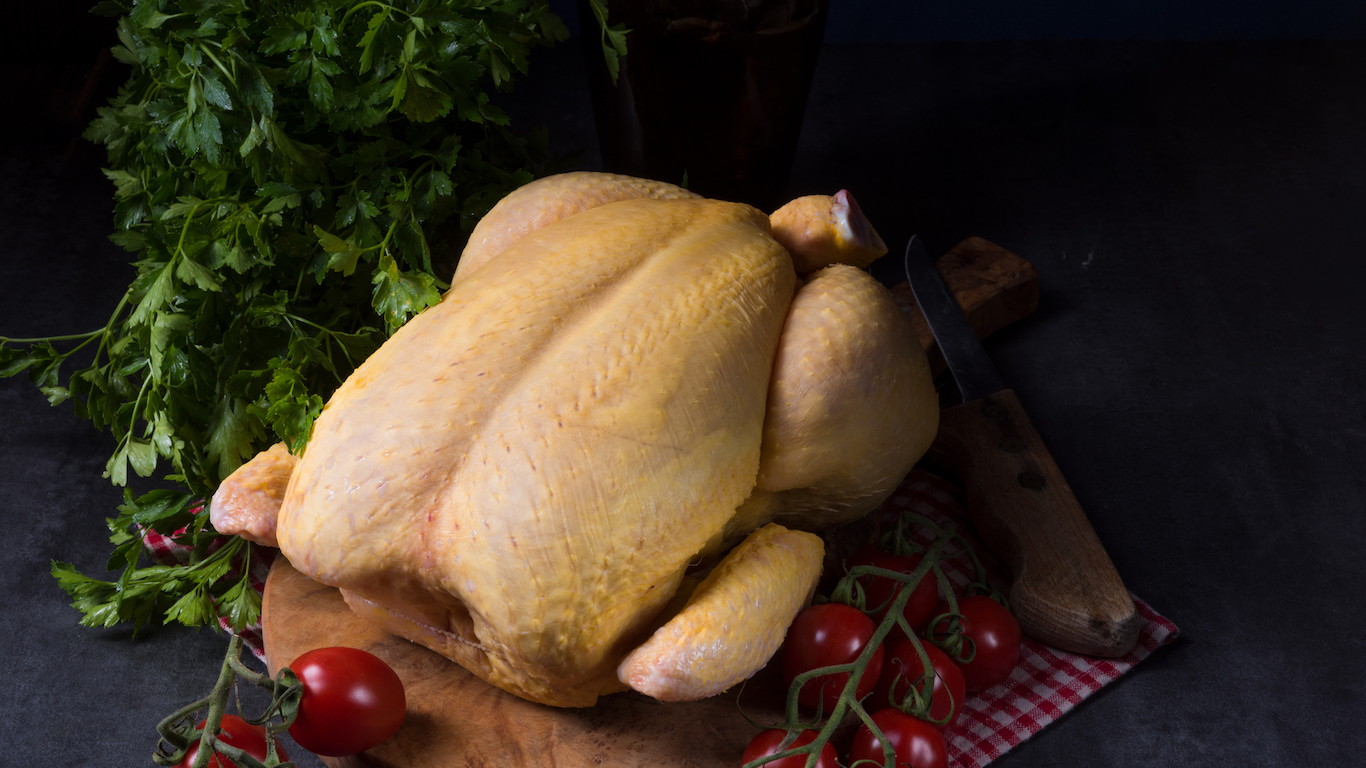
1. Poultry: capon
> Average weight: 6–10 pounds
> Serves: 5–10
A capon is a rooster castrated either surgically or chemically when young and fattened on a rich diet. The bird’s lack of testosterone allows is to gain weight faster, renders it docile, and keeps its meat tender. The result is a kind of super-chicken, usually at least slightly larger (sometimes almost twice the size) than a typical roasting chicken, with particularly delicious meat. Capon is a traditional centerpiece for Christmas feasts in Italy and France today, and it would be an unusual — but not too unusual — change of pace as a Thanksgiving main dish.
[in-text-ad]
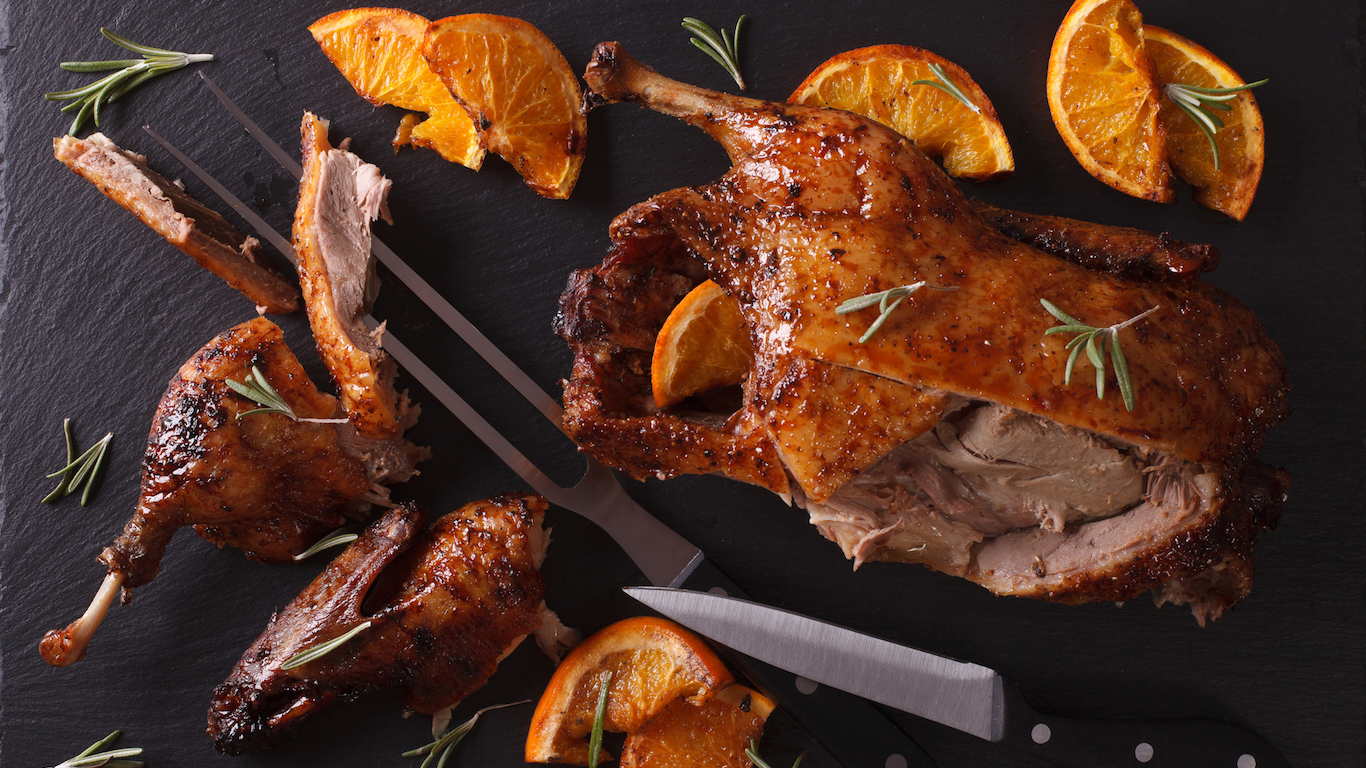
2. Poultry: duck
> Average weight: 4–7 pounds
> Serves: 2–5
Cooking for two or four and still want something festive? Duck is a good choice. The size of the duck depends on its breed and age. The White Pekin, the most popular variety in the U.S., typically weighs around 5 pounds; Muscovys, also sometimes seen, might weigh a pound less. Wild ducks are lighter still: a large mallard probably won’t weigh more than 3.5 pounds. There’s not as much meat on a duck, even proportionately, as there is on a turkey or plump chicken, but it’s red meat, with plenty of fat, and quite rich. Even a smaller duck, then, can feed four if there are enough side dishes — and it would be more than enough for two. If you have more guests coming, just roast two or three ducks.
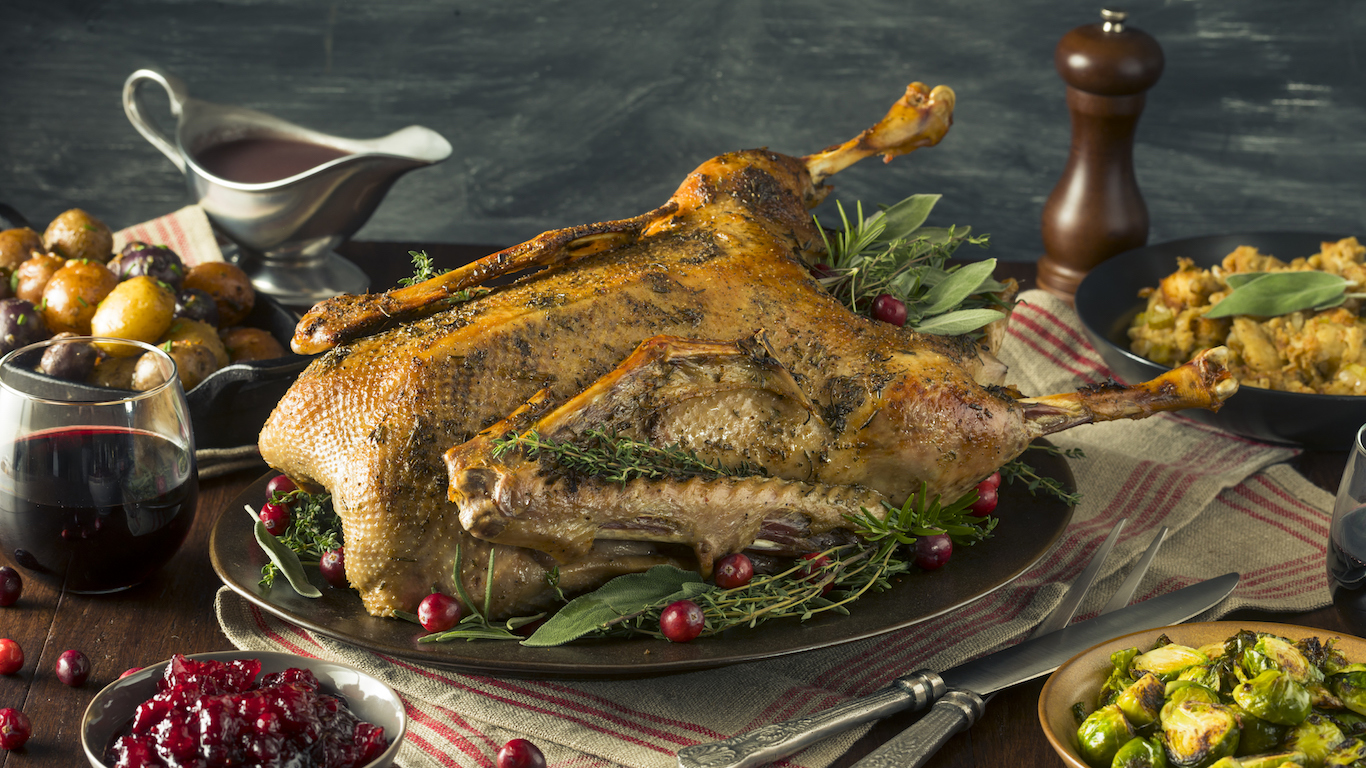
3. Poultry: goose
> Average weight: 8–14 pounds
> Serves: 5–9
“Christmas is coming, the geese are getting fat,” goes a 19th-century English Christmas carol, and in many households in Europe and at least some in America, this bird has long been considered prime Yuletide fare. The first holiday associated with the goose each year in the U.K. is Michaelmas, generally celebrated on Sept. 29, when the bird would traditionally have been fed primarily on harvest stubble. The Christmas goose was a plumper creature, fattened on wheat. Its association with the later holiday aside, goose makes a good, if slightly offbeat, choice for the Thanksgiving table, too, because it’s big and rich and looks good roasted.
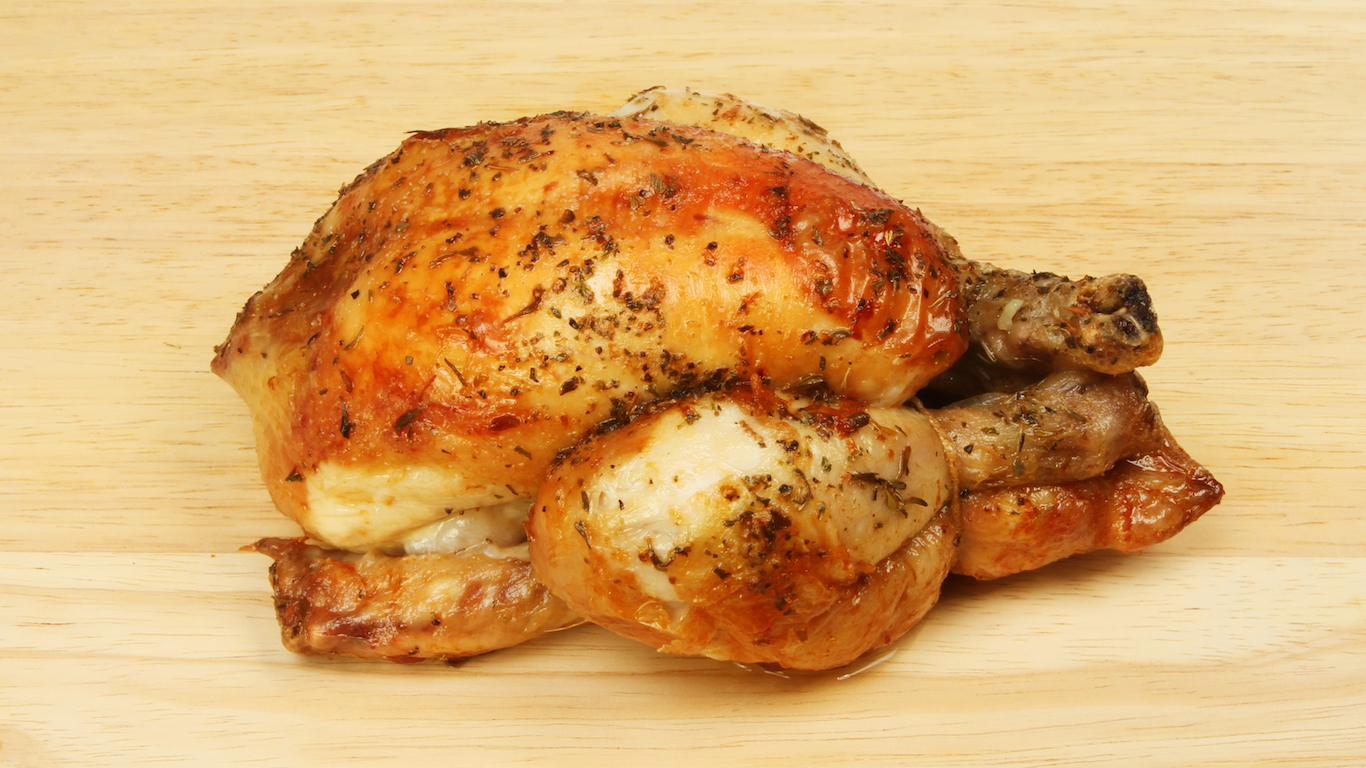
4. Poultry: poussin
> Average weight: 1–1.25 pounds
> Serves: 1
It is sometimes said of an aging person that he or she “is no spring chicken.” A poussin, on the other hand, is a spring chicken — a small, young bird, three to four weeks old. Poussin — the French term is widely used in the U.S. today — is less fatty than a full-grown chicken, with mild, tender meat. One bird will feed one diner, so it’s a good choice for anyone who will be spending the holiday alone and who wants to put something festive on the table. For Thanksgiving dinners for two or more, roast as many poussins as you need, and think of all the big-bird carving that will be avoided.
[in-text-ad-2]

5. Poultry: roaster
> Average weight: 5–7 pounds
> Serves: 5–7
A roaster, or roasting chicken, between 8 and 12 weeks old, is ideal — as its name indicates — for roasting. It’s smaller than a capon (and considerably cheaper, even pound for pound), but larger than the typical 2.5–4-pound broiler or fryer, and looks nice as the centerpiece of a festive table. Roasters have more fat than smaller chickens, which helps keep them moist as they cook, and they usually have a bit more flavor (and slightly more chewy meat) than fryers or broilers.
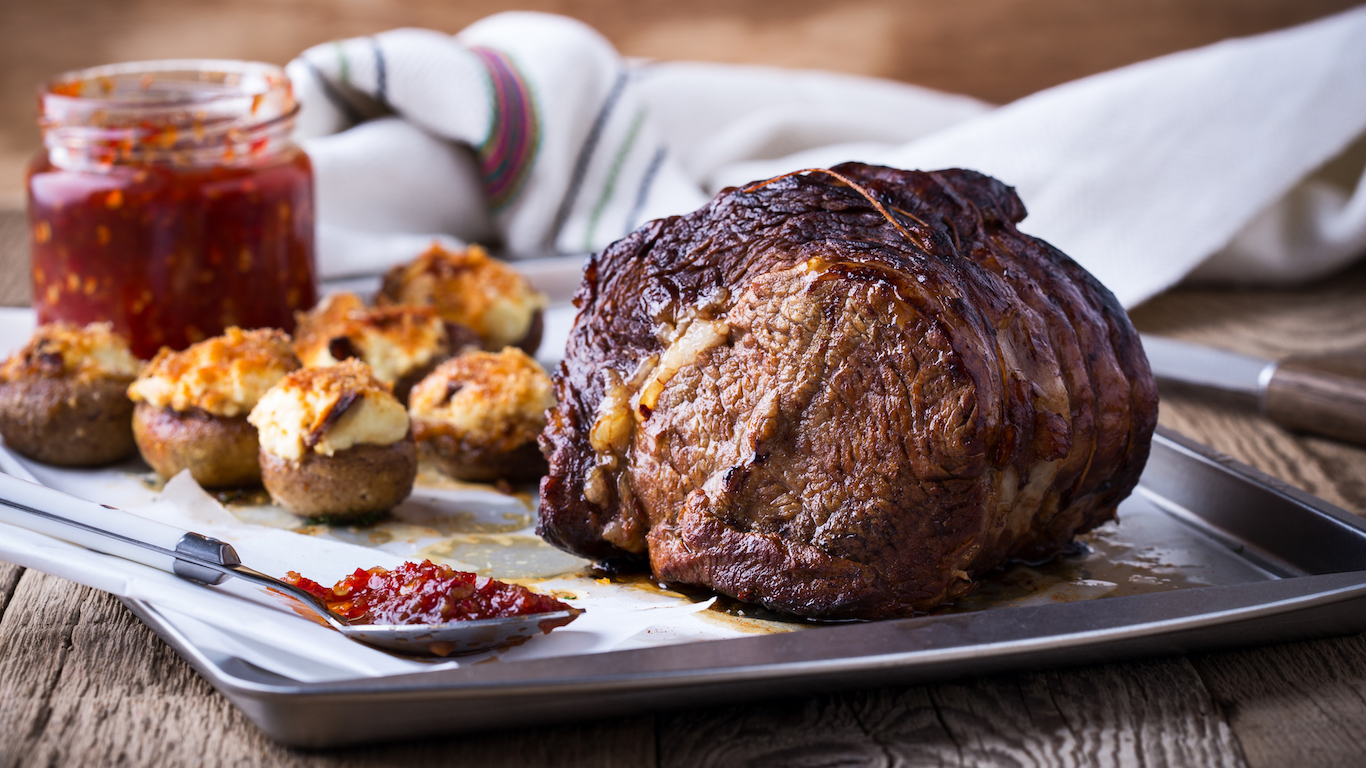
6. Meat: boneless ribeye roast
> Average weight: 6–16
> Serves: 8–32
If you’re feeding a tableful of unreconstructed carnivores, a boneless ribeye roast is an impressive-looking and immensely satisfying — if non-traditional — choice for the Thanksgiving meal. Ribeye comes from the same primal cut as prime rib — it’s the “eye” of the rib, from under the front part of the animal’s backbone — and it’s well-marbled with fat and full of flavor. It’s also very expensive: One specialty retailer, for instance, sells it in 16-pound pieces for $25 a pound. How many people you can feed with this hefty cut of meat depends on how thick you slice it (it’s much easier to “carve” than any bird, of course); most sources recommend allowing half to three-quarters of a pound of meat per person, though some guests might tackle a pound or more.
[in-text-ad]

7. Meat: crown roast of lamb
> Average weight: 4–6 pounds
> Serves: 4–8
This particularly festive-looking arrangement of meat is made by tying two or three racks of lamb — i.e., lamb chops still joined together — into a round shape with the bones protruding upwards so that the whole resembles a crown. (A typical lamb rack consists six to eight chops.) Ask your butcher to French the racks (removing meat and fat from the bone ends that will stick up) and to tie the racks together. The interior cavity of the “crown” calls for stuffing, though some cooks recommend adding it after the meat has been roasted. A crown roast looks beautiful in the middle of the table, and it’s very easy to carve (removing the string first).
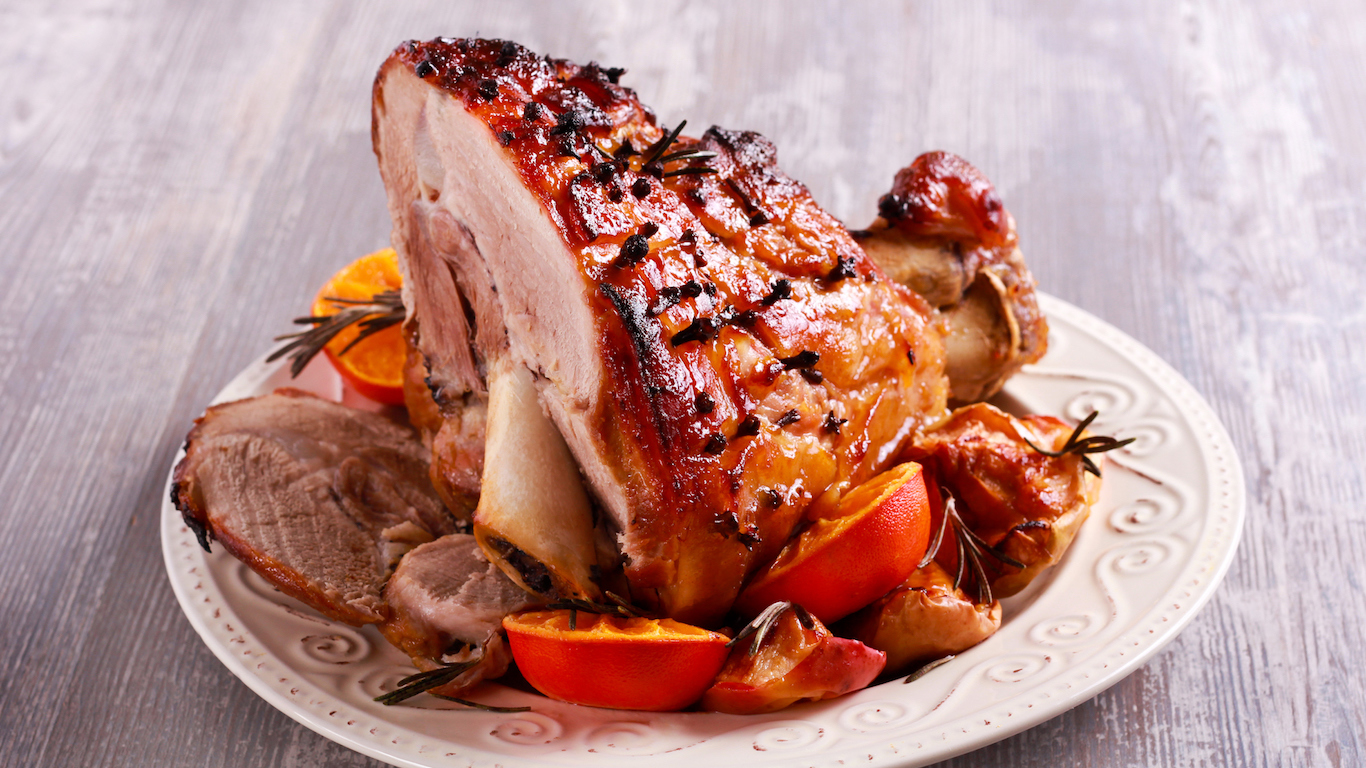
8. Meat: baked ham
> Average weight: 10–14 pounds (bone-in)
> Serves: 20–28 (bone-in)
Ham is the traditional main course for Easter dinner — the association of that meat with that holiday dates back to the sixth century, according to some food historians — but it has also been showing up on Thanksgiving tables for a long time, especially in the South. A smoked, bone-in ham, glazed with something sweet — brown sugar, maple syrup, orange marmalade, pineapple sauce, etc. — and baked to a golden-brown is as imposing as a roast turkey. In fact, if you’re hosting a huge group, consider serving both turkey and ham in the interests of variety and abundance.

9. Meat: roast rack of venison
> Average weight: 2.5–3 pounds
> Serves: 4–5
The Wampanoag Indians, who joined with the Pilgrims for the three-day feast sometimes called “the first Thanksgiving,” contributed five deer to the festivities, so we know there was plenty of venison on the menu. It seems, then, like an appropriate alternative meat for a modern-day Thanksgiving menu. A Frenched venison rack, typically containing eight chops, is a handsome cut for the holiday table. Most of the venison sold in America today is farm-raised in New Zealand and, while rich in flavor, is not as gamy as the wild-shot version.
[in-text-ad-2]
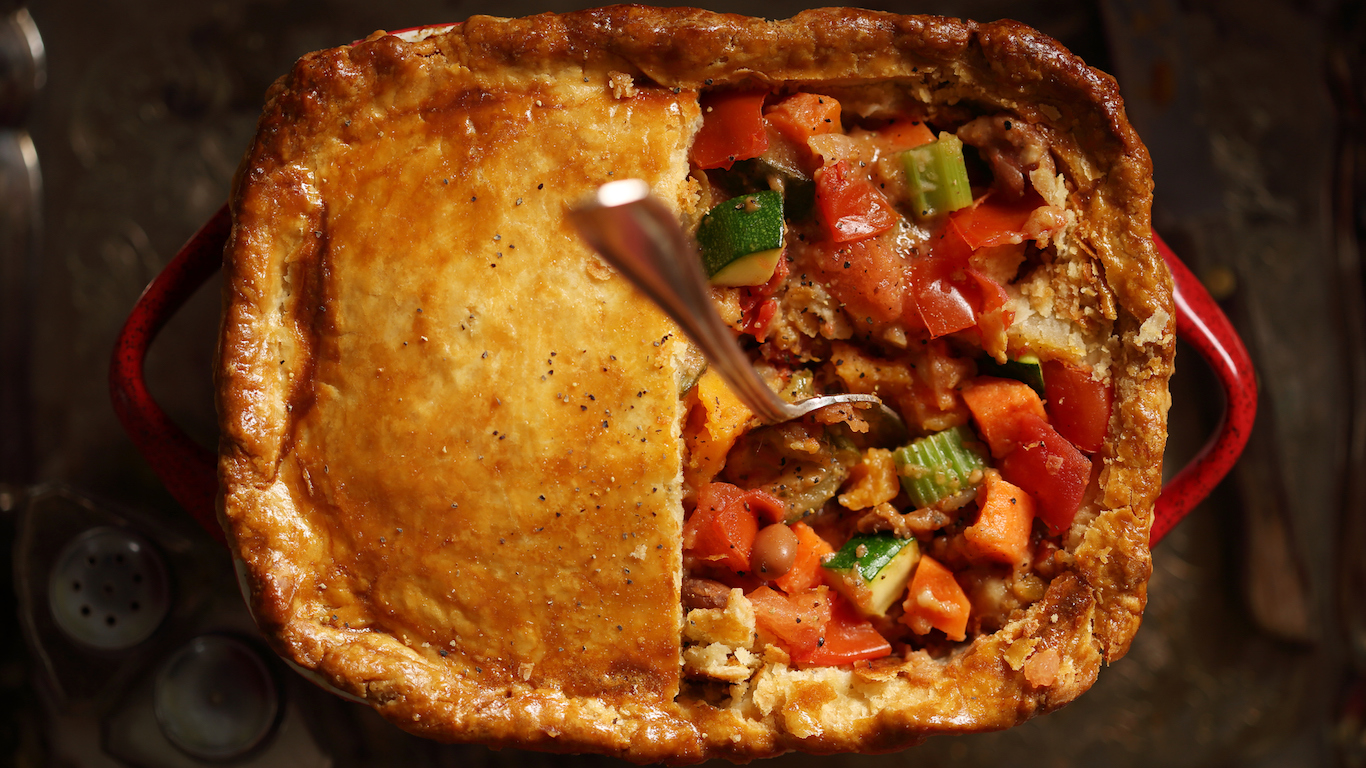
10. Vegetable: vegetable pie
> Average weight: not applicable
> Serves: 2–12
Venison pie may well have shown up on the Thanksgiving table in the 1700s, and the menu at the epic Thanksgiving feast described by Sarah Josepha Hale In her 1827 novel “Northwood” included, besides turkey and various other birds and meats, a chicken pie. Savory pies have long been popular in the U.K., so it isn’t surprising that they crossed the Atlantic with British settlers and became part of early holiday tradition in America. There’s no reason why savory pies have to include meat or poultry, though. If you keep a vegetarian household or want to serve something special to the vegetarians at your Thanksgiving meal — or if you just want to add a flavorful vegetable option to the usual side dishes — a good option would be a savory pie with a vegetable-shortening crust, filled with winter squash, potatoes, sweet potatoes, Brussels sprouts, or other seasonal vegetables, alone or in combination.
Choosing the right (or wrong) time to claim Social Security can dramatically change your retirement. So, before making one of the biggest decisions of your financial life, it’s a smart idea to get an extra set of eyes on your complete financial situation.
A financial advisor can help you decide the right Social Security option for you and your family. Finding a qualified financial advisor doesn’t have to be hard. SmartAsset’s free tool matches you with up to three financial advisors who serve your area, and you can interview your advisor matches at no cost to decide which one is right for you.
Click here to match with up to 3 financial pros who would be excited to help you optimize your Social Security outcomes.
Have questions about retirement or personal finance? Email us at [email protected]!
By emailing your questions to 24/7 Wall St., you agree to have them published anonymously on a673b.bigscoots-temp.com.
By submitting your story, you understand and agree that we may use your story, or versions of it, in all media and platforms, including via third parties.
Thank you for reading! Have some feedback for us?
Contact the 24/7 Wall St. editorial team.